Forbidden Knowledge
Navigating the Cosmos with Eyes Wide Shut
June, 2024

Banished from Eden
From the beginning... we were warned against knowing certain things. The "Fall of Man" and expulsion from the Garden of Eden, however, is less about the effects of information, but rather the price for disobedience. Before eating fruit from the tree of "knowledge of good and evil" how did Adam and Eve know how to be good? They followed God unquestioningly, instead of trying to make moral decisions themselves. The Fall can be seen as a parable of Adam and Eve believing they could be "like God" by their own will and effort, through knowledge.
Aspiring to compete with the Creator seems to be at the unspoken center of all the "Forbidden Knowledge" myths. You can't hope to be told directly the actual secret that you are forbidden to know. That would be "telling." The structure of many myths originate from cultures that worshiped the Sun as the highest god. So building too high, climbing too high, or flying too high would all be metaphors for competing with God's position in the Cosmos.
Fall of Icarus
The middle section of the Banner Image is from 1602, depicting "The Fall of Icarus" after he flies too high and the Sun melts the wax holding his wings together. He subsequently plunges into the sea and drowns. Interestingly, though, knowledge of how to fly wasn't the issue. Icarus didn't build the wings, his father Daedalus built them. Daedalus endeavored for him and his son to fly away from persecution on Crete. It was an act of preservation, not ambition. Also, the warning to Icarus against flying too high was accompanied by a warning against flying too low, or else the wings would be fouled by ocean spray. Not too high, and not too low, his father instructed. Looking more closely at the image, we see the illustrator made a telling choice. Icarus and Daedalus don't appear to have strapped mechanical wings to their arms at all. These are Angel's wings.
Sorcerer's Apprentice
The final incorporated image on the right of the banner depicts a scene from "The Sorcerer's Apprentice" (Goethe 1797). It's a cautionary fable that has many small variants including Disney's version with Mickey Mouse. In the story, the Master Sorcerer leaves his young assistant to watch over the lab while he runs some errands. The Apprentice has been watching his Master work and decides to give the spell book a try. In a popular version, he enchants a broom to fetch water, which it does! However, once commanded to fetch water it continues to do so repeatedly, and the Apprentice doesn't know the spell to make it stop. He tries chopping the broom into pieces with an axe, but the pieces just propagate to full brooms and bring even more water at a faster pace. A great flood. Disaster!

Another variation is from the Grimm's Fairy Tale titled "Sweet Porridge." In this version, a magic pot creates a town-flooding tsunami of porridge. This happens when the little girl who normally commands the pot leaves her cottage, and her naive mother knows only enough to get it started. An interesting reversal of age roles. Here's what's in common:
- A magical device is left unattended
- A neophyte knows just enough to initiate (but not control) the magical process
- The process begins frightening, exponential, self-propagation
- A simple command spawns unintended consequences
As a cautionary tale, there are interesting features the Apprentice and Porridge stories share.
- There is no malicious intent on the part of the neophyte
- There is no hubris or unbridled ambition on the part of the neophyte
- The Adept returns and halts the process
- Consequences for the neophyte range from admonition — "See, you are not yet ready!" to full expulsion.
Consequential Aside...
Current concerns over AGI (Artificial General Intelligence) development are based on the same fears illustrated by these tales. That the experimentation is being done by neophytes before they are sufficiently skilled, and they don't understand and will be unable to control the processes they initiate. The AGI will propagate exponentially which has dire or even existential consequences for humanity. And while the "Sorcerer's Apprentice" deals with magical incantations, pursuing AGI is not safe merely because we consider it technology.

Critically, where now are the Adepts who could halt a runaway process?
Stella Signata
Like the angel wings in the Icarus illustration, we have a notable element from the "Sorcerer's Apprentice" illustration. The Pentagram (figure below on left) — A five-pointed star extended from the five-sided pentagon. If you create a solid from the pentagon you get the 12-sided dodecahedron (below middle by Leonardo Da Vinci). The figure below on the right is a dodecahedron from Kepler's Harmonices Mundi which I discussed in Comprisation Part Three. Kepler mapped each of the solids to an Aristotelian Element, with the Dodecahedron representing Aether and the Cosmos.
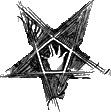
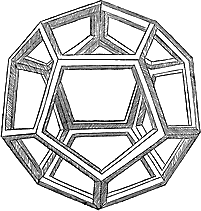
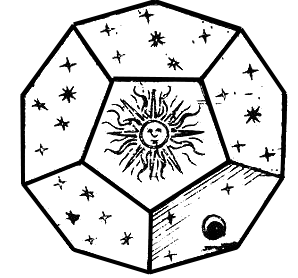
The name "Lucifer," the upside-down pentagram, and the dodecahedron are all related to forbidden knowledge, and perhaps to evil itself. However, five is not a dangerous or evil number. The Greeks used the pentagram as a symbol of health. We have five fingers. How did this come to be?

The answer to why the dodecahedron was considered "forbidden" may come from an incident centered on an ancient Greek named Hippasus. Around 500 BC Hippasus transgressed against his Pythagorean secretive society and was cast out. He reportedly drowns in the ocean soon after and theories involve accident, murder, or anger of the gods. There are two theories for the falling out: [1] Hippasus revealed how to construct the Dodecahedron within a sphere without permission or crediting Pythagoras himself (another Apprentice challenging the Master?). Or because [2] Hippasus refuted the rationalist Pythagorean doctrine that all reality could be expressed as a ratio of whole numbers. This is an even stronger challenge. Hippasus did this through the introduction of an "irrational number:" √2. For rationalists, the square root of two is a nightmare because it results in an unending stream of decimal digits that never repeat. And Hippasus used the Pythagorean Theorem ( a2 + b2 = c2 ) to do it. He took an elemental Square where all sides have a length of 1 and divided it diagonally. The resulting length of the diagonal side would be 12 + 12 = 22 THEREFORE the sides would be = 1 and the diagonal = √2. We will never know for sure, but my bet is on expulsion for √2. And perhaps through Hippasus the Dodecahedron suffers guilt through association.
Sun, Moon, and Venus
At the time of Pythagoras, the third brightest object in the sky after the Sun and Moon would be called "Lucifer" meaning "light-bringer" in Latin. Lucifer's motion against the heavens, creating a pentagram or 5-pointed "rose" every 8 years, would have been known long before Rome or even Ancient Greece were founded.
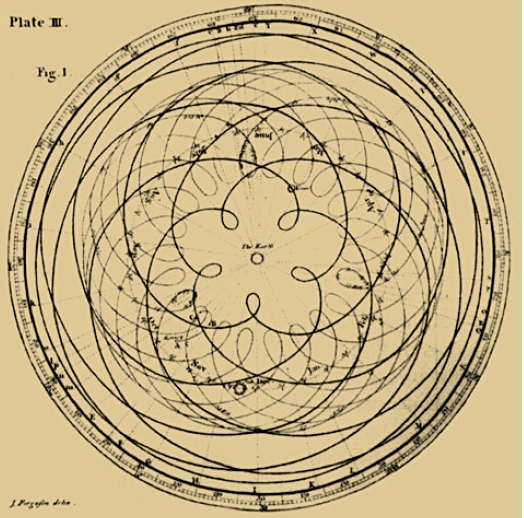
The Planet Venus wasn't named "Venus" — after the ancient Roman Goddess of Love until the 13th century. Before that, the planet was called "Lucifer" by the Romans, "Phosphorus" by the Greeks, and "Ishtar" by the Babylonians. Ishtar's symbol is an 8-pointed instead of a 5-pointed star. Both 5 and 8 represent the 5-pointed figure traced every 8 years by the planet.
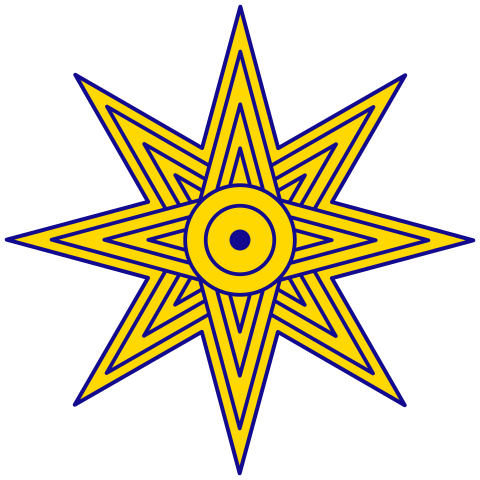
The name "Lucifer" would not be conflated with the Christian Devil, because Christianity was still another 500 years away. "Lucifer" was the Roman name for the "morning star" or "Stella signata (signed star)." There is also an "Evening Star" which turns out to be a different appearance by the same planet, but it was named "Vesper."
Pythagorean Hygiene
The Pentagram is another symbol we might consider sinister, but its original history is anything but. The Greeks considered it a sign representing health and mapped the points to the Classic Elements, properly arranged.
Like most secret societies, the Pythagoreans had a special greeting and symbol to recognize other initiates: Their greeting was "Hygieia" meaning "health" but more specifically "hygiene." Each point of the Pentagram (below left) would have letters from the ancient Greek spelling this out. Hygieia was the daughter of Asclepius, the Greek god of medicine. Asclepius is always pictured with a snake coiled around his staff, as it was a snake that whispered the secret knowledge of healing into his ear. The Staff of Asclepius — below middle, is the modern symbol of Medical Professionals. It is sometimes confused with the Caduceus (below right) which was carried by Hermes Trismegistus, symbolizing Alchemical medicine.


Many other good omens are associated with the 5-pointed star and in the Middle Ages the symbol was thought to "ward off evil." The Classic Elements were mapped to each of the points:
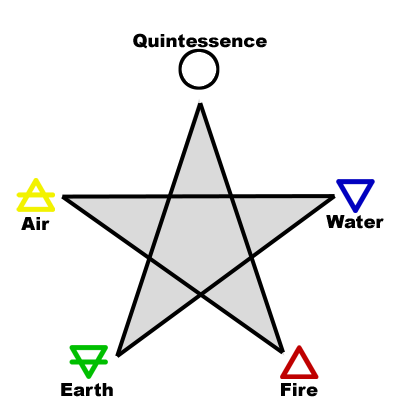
New Age versions label the top element "spirit" and some sources say Pythagoreans equated this with "psyche" or "soul." But that's a separate, complicated topic. We know Aristotle thought the fifth element was "aether," which was like divine air surrounding the outer layer of the cosmos. I'm taking an encompassing approach with my diagram and am just labeling it "Quintessence." The important point is that it's the divine element, contrasted to the material elements forming the base below it.
The Pentagram itself is not the current symbol of evil. That comes from a specific Pentacle. The pentacle is an intentional symbol of magical manipulation and involves a circumscribed star, but not always a 5-pointed star. The 6-pointed hexagram or "Seal of Solomon" has first-century roots as a magic ring used by King Solomon to control good and evil spirits.

This is a pentacle associated with warding off evil spirits.
Rider–Waite Tarot 1909
So not all pentacles contain 5-pointed stars and 6-pointed pentacles certainly don't represent evil. What about 5-pointed pentacles?
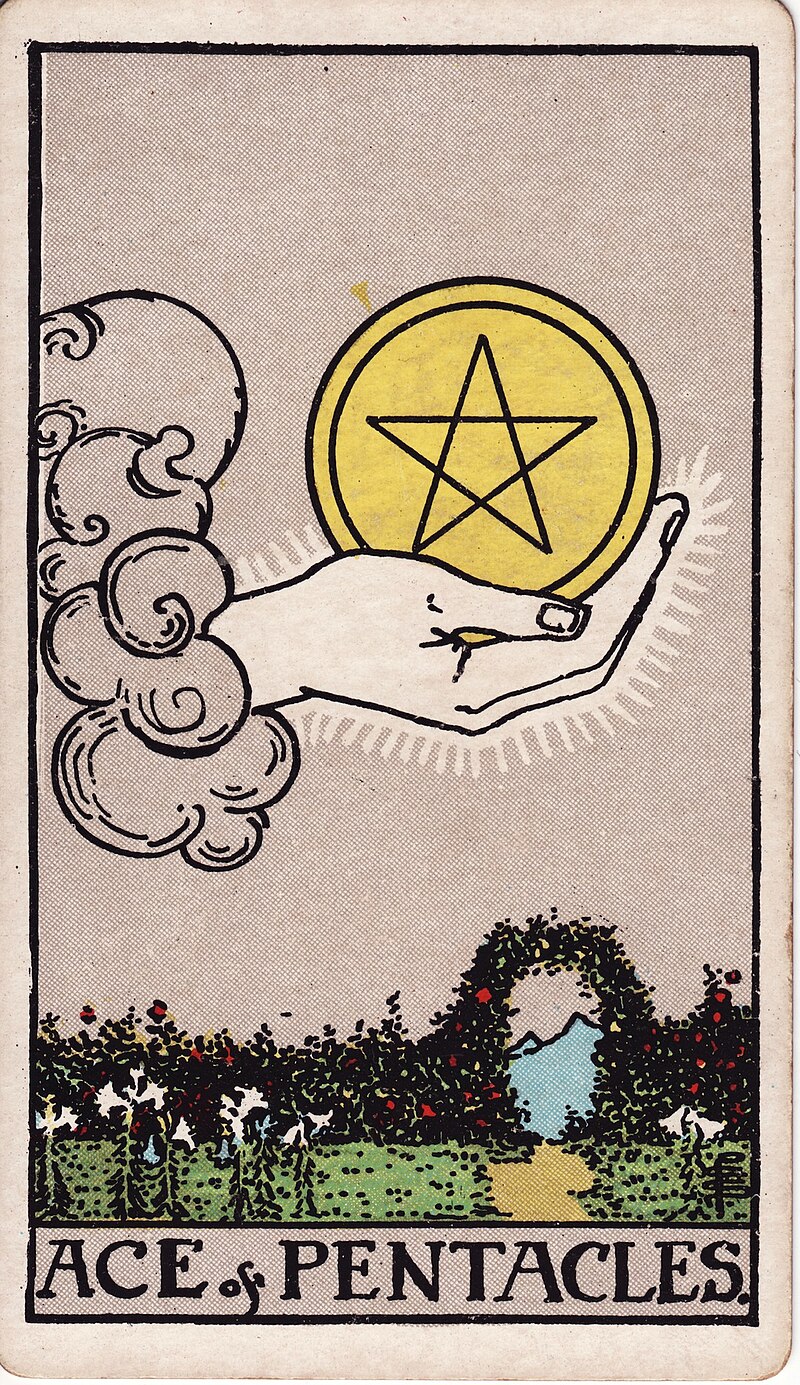
Playing cards were popular as early as the 14th-century in Europe. They were originally designed for games, and their additional use for cartomancy (divination by interpreting a sequence of selected cards) started later in the 18th-century. The 14th-century format of 4 suits with 13 cards each is still unchanged for card games. The most famous divination cards are in the Rider-Waite Tarot deck from 1909. Tarot cards frequently add a "Knight" to the court cards, plus 22 "Major Arcana" trump cards for a total deck count of 78. Of course, the four suits can be mapped to the Classic Elements, although the names of the suits have shifted a bit between the early Latin, French (current), and Rider-Waite Tarot:
- ELEMENT — LATIN — FRENCH — TAROT
- Fire — Clubs — Clubs — Wands
- Air — Swords — Spades — Swords
- Water — Cups — Hearts — Cups
- Earth — Coins — Diamonds — Pentacles
In the "Ace of Pentacles" card above, part of the described "meaning" includes those white flowers recalling the time of the Garden of Eden before the Fall. The suit of Pentacles does not represent evil or black magic. But the creators of the Tarot deck knew about the Devil when a Pentagram was inverted.
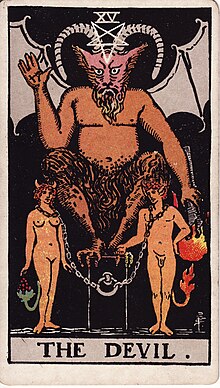
No Sympathy for the Devil
"Let us keep the figure of the Five-pointed Star always upright, with the topmost triangle pointing to heaven, for it is the seat of wisdom, and if the figure is reversed, perversion and evil will be the result."
— Eliphas Levi, 1854
There is no real magic in inverting the pentagram, whether surrounded by a circle or not. Since the original intent is well-being and the proper order of the cosmos, flipping it upside down is just an unoriginal negation. If we illustrate the Freudian Psyche mapped to the Classic Elements we have the following:
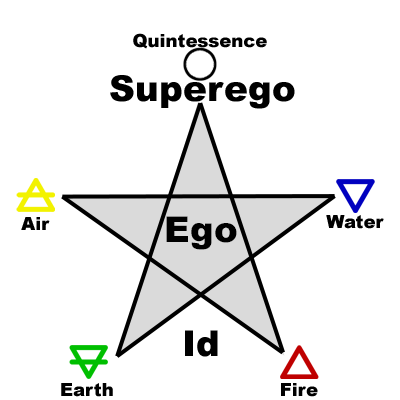
- Superego — Conscience
- Ego — Reason
- Id — Passions
Flipping this upside down is to put the base instinctual passions (the Id) in control, and any sense of morality (the Superego) last. The Church of Satan was founded in 1966 in San Francisco CA, and is just a negation of standard Religious teaching. Someone obviously had hurt feelings. The mapping of an inverted Pentagram to a goat's head is also not original as Eliphas Levi was warning good people against it over a hundred years previously.

Catch a Falling Star
The association with the number five, or its subsequent geometric structures doesn't pan out as explaining prohibited "Secret Knowledge." In fact, the current symbol of modern Medicine is the staff of Asclepius. And Asclepius received his secret knowledge from a snake whispering in his ear!
This issue with five is not its quantity or configuration, but rather its unique identification with the planet Venus. Venus is the morning star, the light-bringer, and the third brightest object in the sky. We are going to look back before the Alchemy of the Renaissance, before the philosophy of the Ancient Greeks, and even before the gods of Ancient Egypt. Before any written history, mankind would watch the night sky and tell stories to explain what was seen. They would project what they knew of themselves and this world, onto the world in the sky, the heavens. Today we would call this anthropomorphizing celestial phenomena. But 50,000 years ago, that was all that was available. "As above, so below, and also as below, so it is above."
The issue with Venus is not that it traces a 5-pointed star every 8 years. It is its observable behavior, and the human story explaining that behavior that matters.
MANY cultures are aware of the behavior of Venus and have tracked its motion for millennia. The Ancient Mayans (1,500 BC - 250 CE) tracked Venus, calculating 5 cycles of 584 days. (5 x 584) = 2,920 days. Divided by 365 days is exactly 8 years. Impressive!

"Morning star before Sunrise". I modified "The Fall of Icarus" to represent a time before civilization.
Those Who Shine Too Brightly...
Depending on the point in its synodic cycle, Venus may appear before sunrise and it will also disappear for several days. But it never appears to reach the apex of the sky. This is the behavior of the "morning star" or "light bringer" that determined its story.
In the mythological cosmos, above the horizon and away from Earth is the realm of the Heavens. Below the horizon is the Underworld, associated with the dead. The morning star, appearing so bright and rising so early can easily be identified as competition with the Sun. The penalty for this arrogance is to be "Cast Down from the Heavens."
This story of this "star" is repeated across many cultures about the same celestial object, and personified by gods under different names who are sent down the Underworld.
The ubiquity of the motif comes from its universality within human hierarchies. It is a cautionary tale about trying to compete with existing leadership. The story is as applicable today as it was for the hunter-gatherer tribes 50,000 years ago. At some point, the leader will be challenged, and if the contender is not strong enough, or not yet ready, they will be "cast down." Not only is the story necessary for maintaining group stability, it needs frequent re-telling and has a "Cosmic Example" visibly demonstrated by the heavens.
Ironically, the Romans, who named the star "Lucifer," did not deem it a god. It was a star that belonged to the goddess Venus (its later name). Nor did the Romans consider it cast down from the heavens, perhaps because there were already scores of deities murdered for questioning their place in the Pantheon.
In the Old Testament, this allegory comes up as a taunt against the fallen King of Babylon:
"How you have fallen from heaven, morning star, son of the dawn! You have been cast down to the earth, you who once laid low the nations! You said in your heart, 'I will ascend to the heavens; I will raise my throne above the stars of God."
— Isaiah 14:12
Depending on the context, "morning star" may or may not be translated as "Lucifer." But the allegory is applied to the King of Babylon (probably Nebuchadnezzar who destroyed the Temple of Solomon and was later defeated by Cyrus the Great). The reference does not identify him as Lucifer or as the Christian Devil. But it does reuse the motif as an object lesson that applies to the King of Babylon. And perhaps for the readers to consider themselves.
A brilliant piece of Christian theology is the identification of the "Fallen Angel" as the source of evil in the world. It answers the question, "If God is good, why does He allow evil?" The "Dualistic cosmologies" of some Gnostic religions propose a "yin & yang" balance between ultimate Good and Evil. This problematically posits the Devil as an equivalent power, in conflict with God. However, placing the origin story of Satan with Lucifer as the Fallen Angel, God remains omnipotent and entirely Good. The source of Evil then is an inferior force associated with human failings such as pride, arrogance, and deceit.
God only casts Lucifer out of Heaven for his insubordination. He does not destroy him. Adam and Eve are cast out of the Garden of Eden (they were not outright killed). Likewise, the Sorcerer's Apprentice is merely admonished for attempting to harness "The Force" too soon.
The practical side of not destroying the challenger is that they might be the necessary successor. A leader who kills off the next most qualified member sequentially will someday leave the group without a viable leader. That change flattens the hierarchy and destins the weakened group to annihilation.
The source of why some knowledge is "Forbidden Knowledge" does not come from numbers, or shapes, or proper names. It comes as a warning about powers not yet earned. With the Philosopher's Stone, the ultimate desire was a Godlike ability. As Gottfried Leibniz put it, "If anyone could do this he would be omnipotent in nature, able to make anything out of anything."
That the final result of Aristotelean Alchemy was Lucifer (aka phosphorus) should be telling.
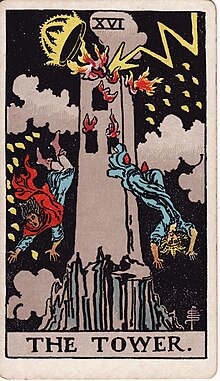
16. THE TOWER: The Pictorial Key to the Tarot, 1910
"It is a card in particular of unforeseen catastrophe."
The other articles in Boundaries of Objectivity will explore this further. You can leave thoughtful comments or questions at the link below.